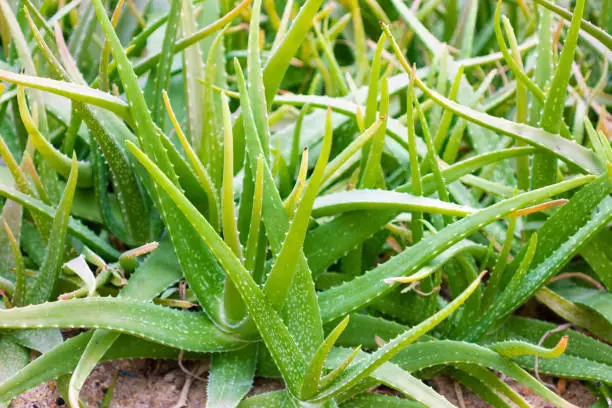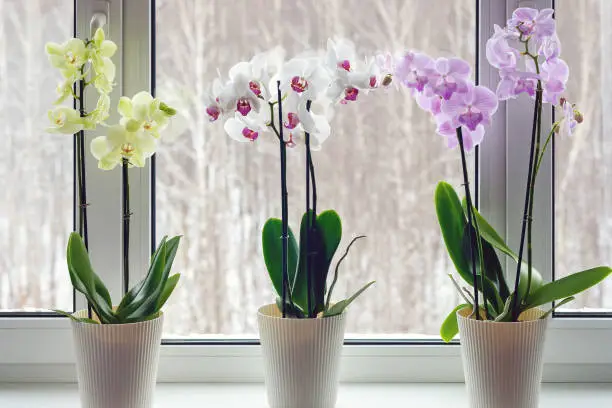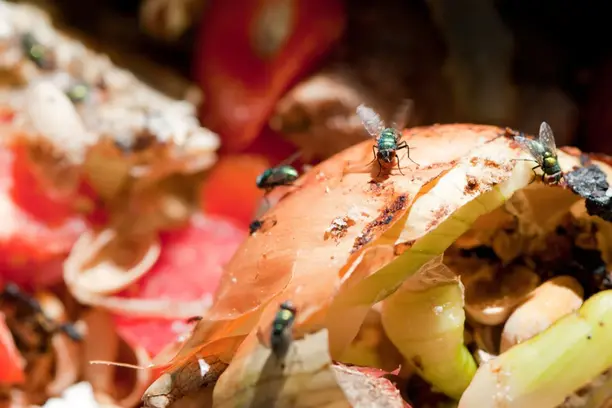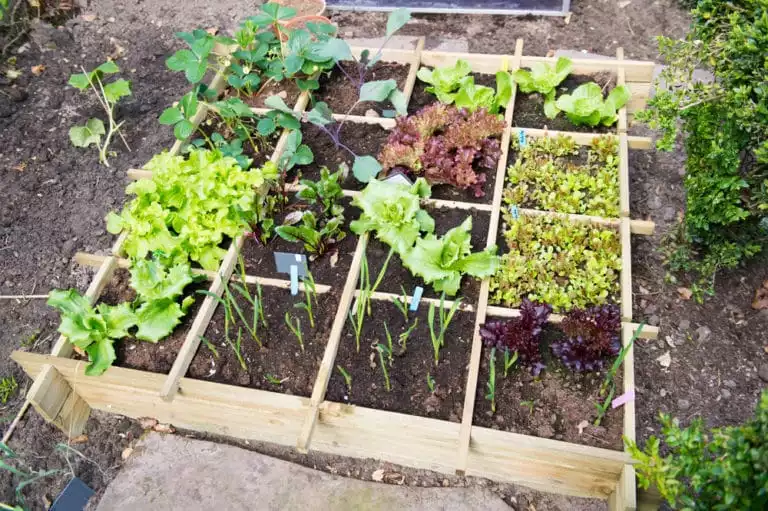Many chemicals are used as ingredients in products in our homes. Flooring material, electronics, and many other products emit toxic volatile organic compounds (VOCs) that pollute your indoor air. The good news is that you can use air-purifying plants to clean indoor air in your living areas, bathrooms, and even bedrooms. But what plants can clean the air and remove toxins?
The best air purifying plants include the spider plant, snake plant, devil’s ivy, Chinese evergreen, peace lily, bamboo palm, dracaena, Barberton daisy, and weeping fig. Some of these houseplants are safe for cats and dogs and can grow indoors in low-light settings such as bedrooms and bathrooms.
A NASA experiment conducted by 3 scientists found that houseplants such as spider plants and Devil’s ivy were capable of removing volatile organic compounds that pollute indoor air such as xylenes, styrene, toluene, and trichloroethylene.
Best air-purifying plants for indoor spaces
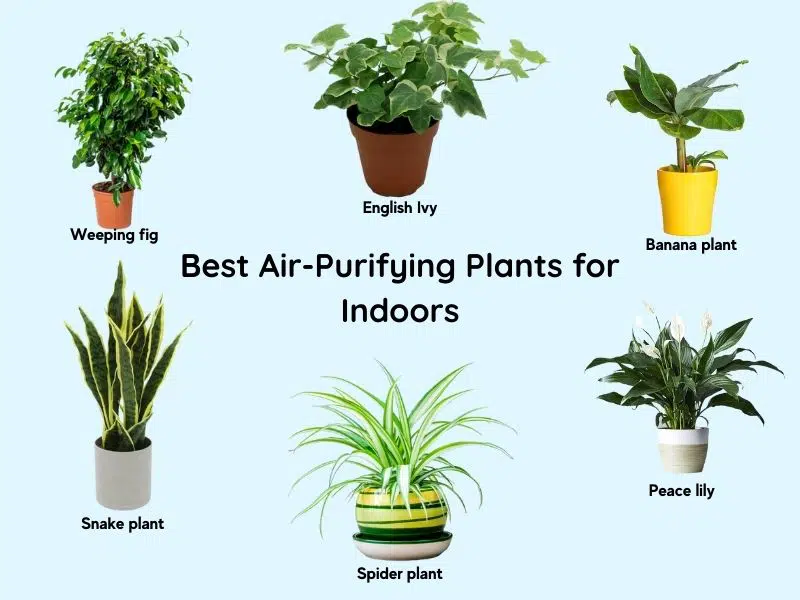
Indoor plants are a great interior decor element for any home. You can hang some plants in baskets, such as spider plants, to beautify your home while cleaning the air. When choosing the perfect houseplant, you want to consider whether or not it is safe for your pets (dogs and cats), and its growing requirements.
I’ve listed below the best air purifying plants recommended by NASA for growing indoors – living areas, kitchen, bathrooms, and bedrooms, with their light, water, humidity, and temperature requirements.
Here are the best air purifying plants to grow indoors:
1. Spider plant (Chlorophytum elatum)
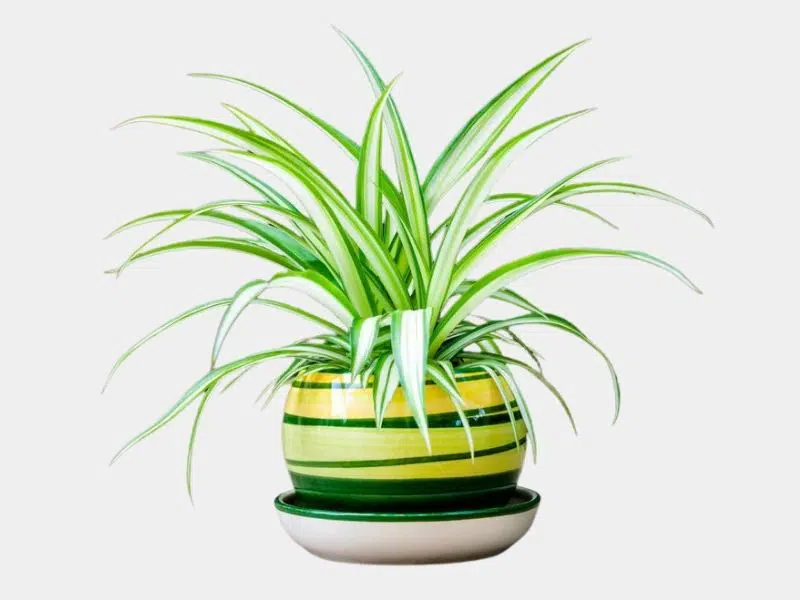
The NASA study found that the spider plant can remove up to 90% of harmful indoor air pollutants such as formaldehyde that potentially cause cancer. The chlorophytum elatum variety of spider plants that were tested had a total leaf surface area of 2471 cm2 and was able to remove up to 10378 micrograms of formaldehyde over a period of 24 hours.
RELATED: WHAT ARE THE DIFFERENT TYPES OF SPIDER PLANTS
| Plant name | Spider Plant (Chlorophytum elatum) |
| Toxins it removes | Formaldehyde, xylene, and toluene. |
| Light requirements | Bright indirect light. |
| Water + humidity | 50% humidity, water once a week. |
| Size | 2-3ft tall. |
| Pet safety | Safe for dogs and cats |
The spider plant is known as one of the best air filtration houseplants because of a large cumulative leaf surface area for cleaning the air, removing toxins like formaldehyde and benzene emitted by furniture polish, paint thinner, tobacco smoke, detergent aerosols, and air fresheners.
Spider plants are air filters that tolerate low light conditions but prefer bright indirect light, which makes them easy to grow in pots and hanging baskets in most indoor settings such as bedrooms, bathrooms, living areas, etc. You can place this air cleaning plant in an office with a window or hang it from the ceiling to get enough indirect sunlight.
Here are other benefits of spider plants:
- Removes carbon monoxide, xylene, formaldehyde, and toluene.
- Removes ozone
- Increases humidity in the house
- It is safe for cats and dogs
I also recommend it as a good air purifying plant for pet owners as well because it can help to remove ammonia from the air, which is released by pets in their urine when they pee in the house.
2. Snake plant (Sansevieria laurentii)

A mother-in-law’s tongue with a total leaf surface area of 3474 can remove up to 9727 micrograms of formaldehyde and other indoor toxins in 24 hours. When grown indoors, the snake plant can remove other toxins as well including CO, benzene, and toluene.
| Plant name | Snake Plant (Sansevieria laurentii) |
| Toxins it removes | Benzene, formaldehyde, toluene, xylene, and trichloroethylene. |
| Light requirements | Medium to bright indirect light. |
| Water + humidity | Water once a week; 40% humidity. |
| Size | 1-4 feet tall. |
| Pet safety | Mildly toxic to pets. |
Snake plants can tolerate direct sunlight to some extent, so you can grow them as east-facing indoor plants or near windows that receive some amount of direct sunlight. However, the plant can tolerate indoor low light even though their preference is bright indirect light.
- You can grow snake plants in your bedrooms, living room, kitchen, and even bathroom.
- Sansevieria can thrive in clayey soil but prefer a well-draining potting mix.
- Snake plants are safe for cats and dogs except when ingested in large amounts.
The mother-in-law’s tongue is easy to grow and maintain as an indoor plant and does not need much water to survive. Only water this air-purifying plant when the soil is dry. It grows well in pots of the clayey potting mix though it is drought tolerant if watered sparingly. The only problem with snake plants is that they are sensitive to extreme temperatures, so avoid placing them in your kitchen.
3. Devil’s Ivy (Epipremnum aureum)
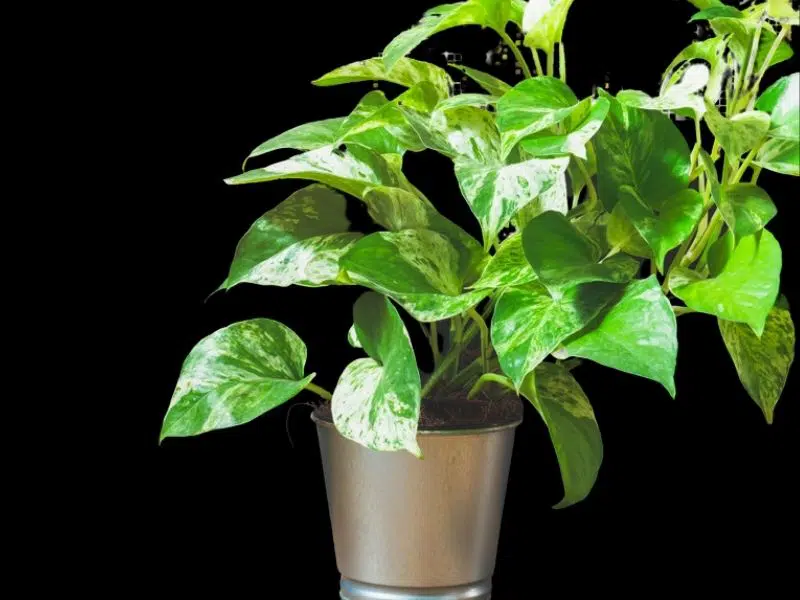
Devil’s ivy (pothos) has been found to absorb toxins such as benzene, formaldehyde, and xylene from the surrounding environment through its heart-shaped foliage. Golden pothos grows in a vine-like style and can be grown indoors in most settings with low light.
- Devil’s Ivy grows best in moderate indoor light conditions so place it in your living room or bedroom near a window to purify your indoor air.
- Devil’s ivy needs well-drained soil with high organic matter content.
- It does best when watered once per week to keep the soil moist at all times. Too much water can cause root rot in pothos.
| Plant name | Pothos; devil’s ivy, (Epipremnum aureum) |
| Toxins it filters | Benzene, formaldehyde, toluene, and xylene. |
| Light requirements | Bright indirect light. |
| Water + humidity | Water 1-2 times per week; 40-50% humidity. |
| Size | 10 ft (trailing) |
| Pet safety | Toxic to cats and dogs. |
Note that devil’s ivy does not remove ammonia and trichloroethylene from indoor air. If you’re looking for a houseplant that’ll remove the ammonia odor produced from pet urine in your home, pothos is not the best choice for this.
Another disadvantage of pothos as an air purifier is that it is toxic to cats and can cause serious symptoms such as swelling, skin irritation, difficulty swallowing, and vomiting.
4. Dracaena
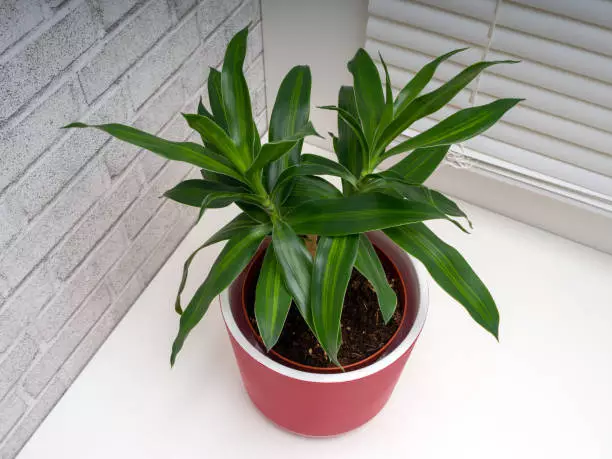
Dracaena fragrans is a plant popular for its ability to clean formaldehyde and benzene from indoor air. It comes in many varieties with the most common being “Warneckii.” Warneckei dracaena can grow up to 5 feet tall and about 24 inches wide when potted indoors.
In the NASA air purification study, various species of dracaena were found to be among the best plants for cleaning indoor air naturally. Here are the best varieties of dracaena for air purification:
- Dracaena marginata
- Dracaena deremensis “Warneckei”
- Mass cane (Dracaena massangeana)
- (Dracaena deremensis “Janet Craig”)
Various dracaena species can remove most toxins from indoor air except ammonia. You can therefore grow dracaena plants in your house if you don’t have pets and want a small plant that will remove formaldehyde and other organic chemicals.
| Plant name | Dracaena; (Dracaena trifasciata ‘Laurentii) |
| Toxins it filters | Benzene, formaldehyde, trichloroethylene, toluene, and xylene. |
| Light requirements | Bright indirect light. |
| Water | Water once per week. |
| Size | 4 to 10 ft tall. |
| Pet safety | Toxic to pets – cats, dogs. |
Dracaena plants are toxic to dogs and cats, which is a major disadvantage if you’re looking for air-purifying plants that are safe for pets. However, I like the plant because of its relatively small size. It is better for small spaces compared to most indoor low-light trees and can fit in most apartments. You can grow dracaena in your bedroom or other indoor spaces if your square footage is limited.
To promote growth and keep it alive longer, dracaenas need bright indirect light but can tolerate low light conditions though they will experience a slow growth rate when not receiving enough light. Keep them on the dry side by watering once every seven days to make sure the soil remains moist – not too dry and not too wet.
RELATED: WHAT IS INDIRECT LIGHT FOR PLANTS
5. Bamboo palm (Chamaedorea seifritzii)
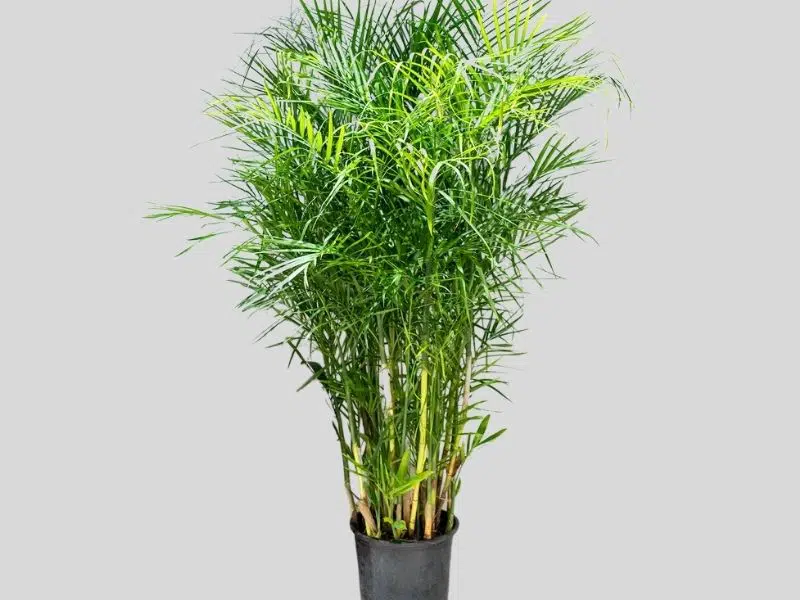
Bamboo palms act as an air cleanser by removing formaldehyde from the air which is found commonly in many household cleaning products like bleach, detergents, fabric softeners, toilet cleaners, etc. This plant can also get rid of benzene, toluene, and xylene from indoor air.
| Plant name | Bamboo palm (Chamaedorea seifritzii) |
| Toxins it filters | Xylene, benzene, toluene, formaldehyde, and trichloroethylene. |
| Light requirements | Bright indirect light. |
| Water | Water once per week. |
| Size | 4 to 12 ft tall. |
| Pet safety | Safe for pets – cats, dogs. |
Here’s why you should choose a bamboo palm as an air-purifying tree for your home:
- It is a pet-safe air purifier (safe for dogs and cats).
- Oxygen purifying plant that removes most airborne toxins except ammonia.
- It is easy to care for and grow indoors.
Bamboo palms can grow to a height of 4 to 12 feet when grown indoors in pots but can be trimmed back often to make sure they don’t outgrow your indoor space. You can, therefore, still grow bamboo palms in small apartments to help remove toxins and eliminate the need for air purifiers.
The bamboo palm is one of the palm trees with a slow growth rate, making it suitable for planting indoors in pots. With just occasional watering in pots that have drainage holes, the plant can grow steadily without the need to prune too often. Overwatering palms can lead to root rot.
A bamboo palm needs bright indirect light or some direct sun exposure in the morning that’s not more than two hours and moderate humidity levels of 40-80%. The soil has to drain well or else plants will suffer root rot and other palm tree diseases.
6. Peace lily (Spathiphyllum ‘Mauna Loa’)
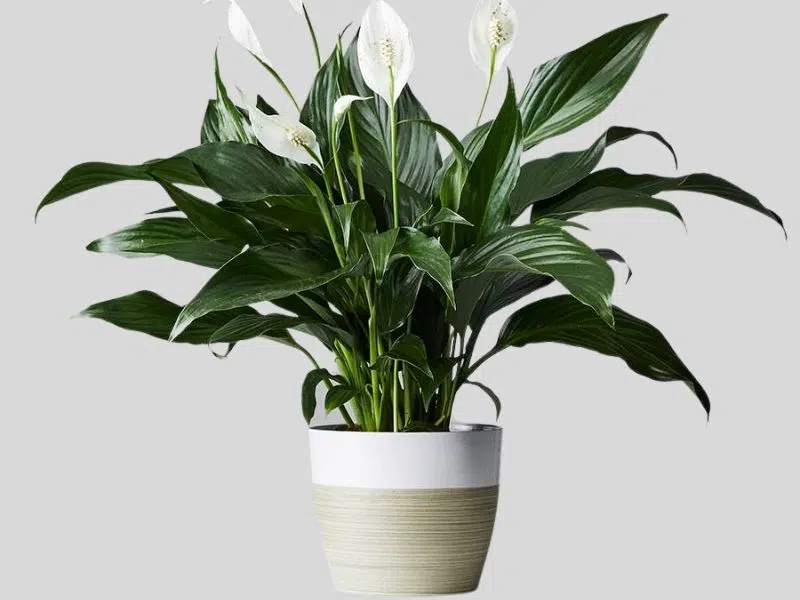
A peace lily with a foliage surface area of 7,960 cm2 was able to remove 41,392 micrograms of benzene toxin from indoor air within 24 hours according to a NASA study. This makes spathiphyllum some of the best air-filtering plants you can grow indoors for clean oxygen.
Apart from benzene, peace lilies can also remove ammonia, formaldehyde, and xylene. The only downside is that spathiphyllum is not safe for cats and dogs. However, they’re easy to grow and care for – from planting to pruning – and produce beautiful white flowers.
| Plant name | Peace lily (Spathiphyllum ‘Mauna Loa’) |
| Toxins it filters | Trichloroethylene, xylene, ammonia, toluene, benzene, and formaldehyde. |
| Light requirements | Bright indirect light. |
| Water | Water once per week. |
| Size | 1 to 4 ft tall. |
| Pet safety | Not safe for pets – cats, dogs. |
Peace lilies are fairly small plants that can be grown in small spaces indoors. This makes them suitable air purifying plants for bedrooms, bathrooms (with ventilation and window), and other living areas. I’d recommend a peace lily as a great air filtering plant for household apartments that don’t have pets.
Peace lilies require bright indirect light, watering once a week when the soil dries out, an optimal temperature of 68 to 85 °F, and 50-60% humidity to thrive well. If you grow them in low light conditions, peace lilies will not bloom.
RELATED: HOW TO MAKE IT BLOOM FOR A PEACE LILY THAT IS NOT FLOWERING
7. Weeping fig (Ficus benjamina)
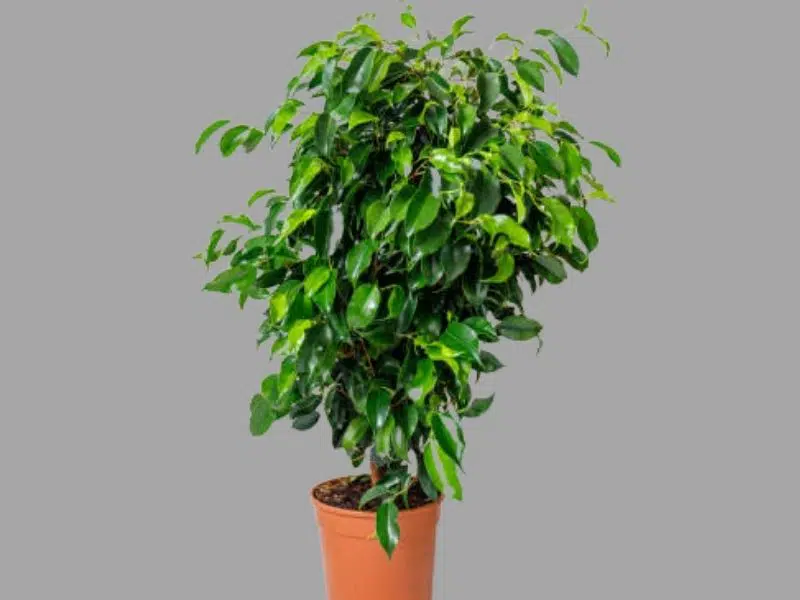
Weeping figs grow to a height of 3-6ft tall when grown indoors, making them one of the best air purifying indoor trees for homes with limited space. Since it doesn’t require much light to grow, you can keep this in a room with low lights near the window such as the bedroom or bathroom (or other rooms where natural sunlight does not reach), and still get all the benefits of its oxygen filtering.
| Plant name | Weeping fig (Ficus benjamina) |
| Toxins it filters | Xylene, toluene, and formaldehyde. |
| Light requirements | Bright indirect light. |
| Water | Water once per week. |
| Size | 3 to 6 ft tall. |
| Pet safety | Not safe for pets. |
Pollutants and toxins weeping fig trees can remove from indoor air include formaldehyde, toluene, and xylene. This tree will not be able to detoxify your indoor air if you’re dealing with ammonia pollution, benzene, and trichloroethylene.
- Provide at least six or more hours of sunlight daily
- Plant in well-draining soil in the pot
- Water only when the top inch or two of the soil is dry
- Grow the tree at a temperature ranging from 65 and 85 degrees Fahrenheit.
Ficus benjamina trees are easy to care for although they can grow very bushy if well-fed. You’ll want to prune the tree now and then to prevent it from growing too big and occupying most of your space.
8. Banana plant (Musa oriana)
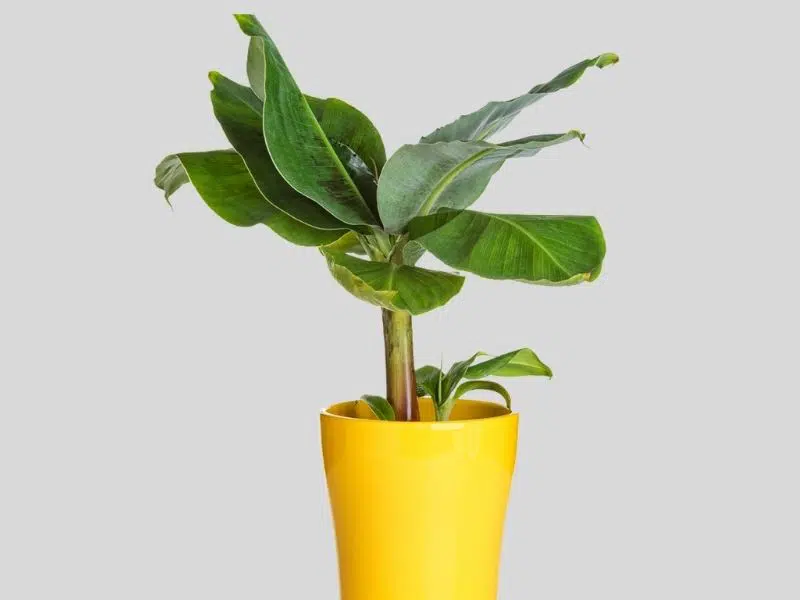
Dwarf banana plants (Musa oriana) can be grown indoors because they are large-leafed, which means they have a big surface area for absorbing toxins and releasing refreshing clean oxygen for you to breathe.
Banana plants can be used as a room air purifier because they remove formaldehyde, which is produced by most modern building materials when warmed or exposed to sunlight.
- Water banana plants only when the soil feels a little dry.
- Grow banana plants preferably near south-facing windows for bright indirect light.
| Plant name | Banana plant (Musa oriana) |
| Toxins it filters | Formaldehyde. |
| Light requirements | Bright indirect light. |
| Water | 1-2 times per week. |
| Size | 5 to 9 ft tall. |
| Pet safety | Safe for pets. |
The average size of these dwarf varieties ranges between 5 and 9 feet tall. Leaves can grow to about 2 feet wide, or even longer at maturity, so they are great to grow within an indoor environment with some space in the corners or near windows.
9. Chinese Evergreen (Aglaonema modestum)
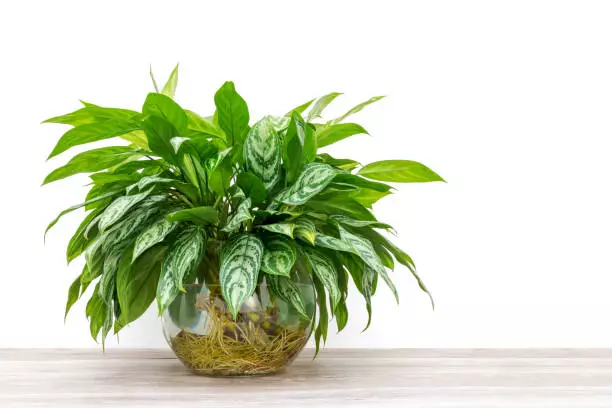
The Chinese evergreen plants are best suited to grow in a bedroom or bathroom with low light conditions as they are small in size with big leaves. Their surface area is large, so they release a lot of oxygen into the atmosphere.
However, they do require moderate to high humidity for growth which is why I like growing them in bathrooms. If the humidity in your house is low, you want to mist the Chinese evergreen plant frequently to keep it healthy and happy.
- Light requirements: indirect sunlight (medium-low light)
- Watering: once per week
- Air purification: removes benzene and formaldehyde
- Toxicity: Toxic to pets
The only downside is that this plant is slightly toxic to pets (cats and dogs), so you want to be careful not to place it indoors if you have pets in your house.
10. Aloe vera plant
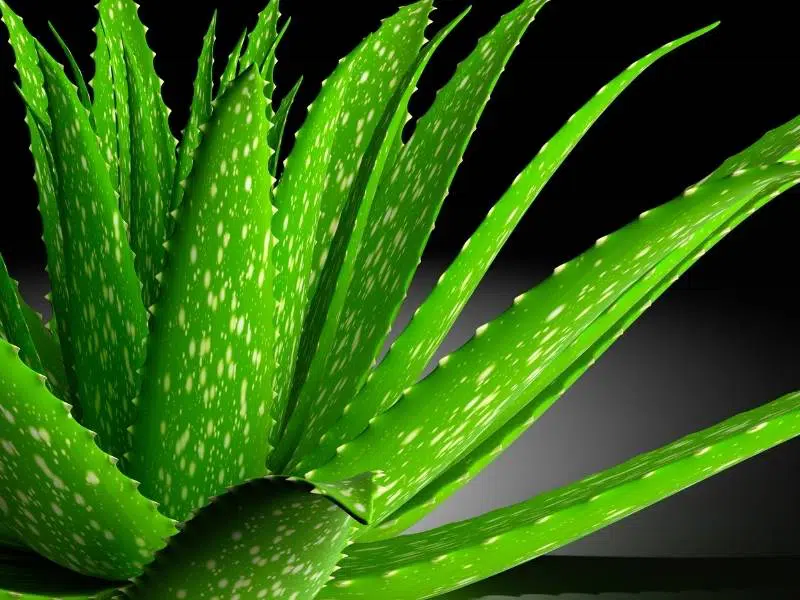
Aloe vera is a common natural medicinal succulent that can also purify indoor air. This succulent can grow well in fairly low light conditions and is effective at removing formaldehyde and benzene from the air – two of the most common toxins found indoors.
An aloe vera succulent with a total leaf surface area of about 713 cm2 can remove up to 1,555 micrograms of formaldehyde from indoor air in 24 hours.
- Light requirement: about 6 hours of bright indirect light
- Watering: once every 1-2 weeks
- Size: 24-39 inches tall
- Pet safety: Mildly toxic to pets
However, you cannot use aloe vera alone as an air purifying plant because it only removes formaldehyde and benzene toxins. Grow it alongside other air cleaners to remove bacteria, viruses, allergens, ammonia, and trichloroethylene.
11. Barberton daisy (Gerbera jamesonii)
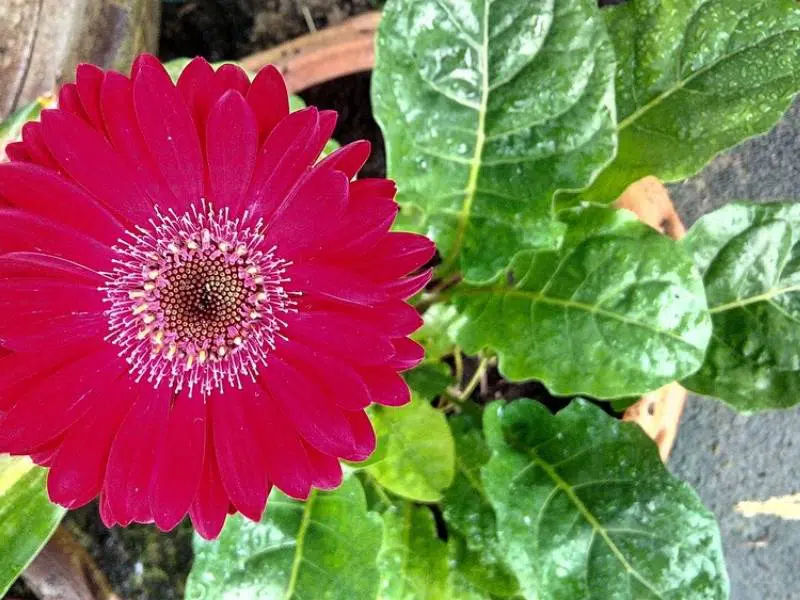
The Barberton daisy is a popular perennial for brightening up the home and providing an abundance of cheerful, showy blooms in any indoor space. Apart from their aesthetic appeal, Gerbera jamesonii plants are good at cleaning indoor air, removing toxins such as formaldehyde, benzene, and trichloroethylene.
Due to its bright light requirements (bright windows can work well) this plant’s versatility makes it perfect for bathrooms or bedrooms with large windows and doors.
Here are the general care requirements for Barberton daisies:
- Light: Provide full sun
- Water: 1-2 times per week to keep the soil moist
- Humidity: 50-60%
- Temperature: 55 – 75°F
Other air cleansing plants you can grow indoors include rubber plants, flamingo lily, English ivy, parlor palm, lady palm, philodendrons, moth orchids, dumb canes, dwarf date palm, and the Kimberley queen fern.
Air cleaning plants safe for cats and dogs
When choosing the best air purifying plants for your home, you want to make sure they are safe for cats and dogs. It’s best not to have any dangerous plants in areas where dogs or cats walk and play to avoid the risk of plant poisoning.
Here’s a list of pet-safe air purifying plants:
- Boston fern
- Bamboo palm
- Prayer plant
- Gerbera Daisy
- Spider plant
Cats and dogs can easily chew on many kinds of houseplants and even drink from potted flowers. Cats even rub themselves against plants and their pots. These can be one of their sources of poisoning.
Signs of pet poisoning from toxic plant materials include nausea, vomiting diarrhea, swelling, irritation, shaking off balance, and drooling. If you see these symptoms, take your pet to a veterinarian immediately.
If you have pets such as dogs and cats in your house, avoid air purifying plants that are not safe for pets including snake plants, aloe vera, jade plants, philodendrons, weeping figs, and rubber plants, English ivy, and pothos.
How many plants do you need to purify indoor air?
Plants are great for increasing oxygen indoors and cleansing the air, but how many plants do you need to effectively clean air? Studies have shown that just a few plants can only filter a very small amount of toxins indoors. To achieve significant air purification using air-filtering plants, you need to have quite a large number of plants in your house. But how many?
You need approximately 93 air purifying plants to significantly clean indoor air naturally. The more plants you have, the more harmful chemicals you can remove. The English ivy, gerbera daisy, and snake plants have the best surface area to air purification ratio, so grow as many of them as possible.
Average households exchange air about 5-6 times per hour. In 24 hours, the air in your house will have exchanged about 156 times, which is too fast for just a few plants to purify and supply enough clean air in the house.
References:
[1] Wolverton, B. C., Johnson, Anne, Bounds, Keith, NASA John C. Stennis Space Center Bay Saint Louis, MS, United States: Interior Landscape Plants for Indoor Air Pollution Abatement
[2] John Bower, CDC Healthy Housing Reference Manual, Chapter 5: Indoor Air Pollutants and Toxic Materials
